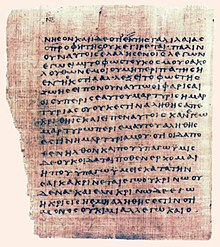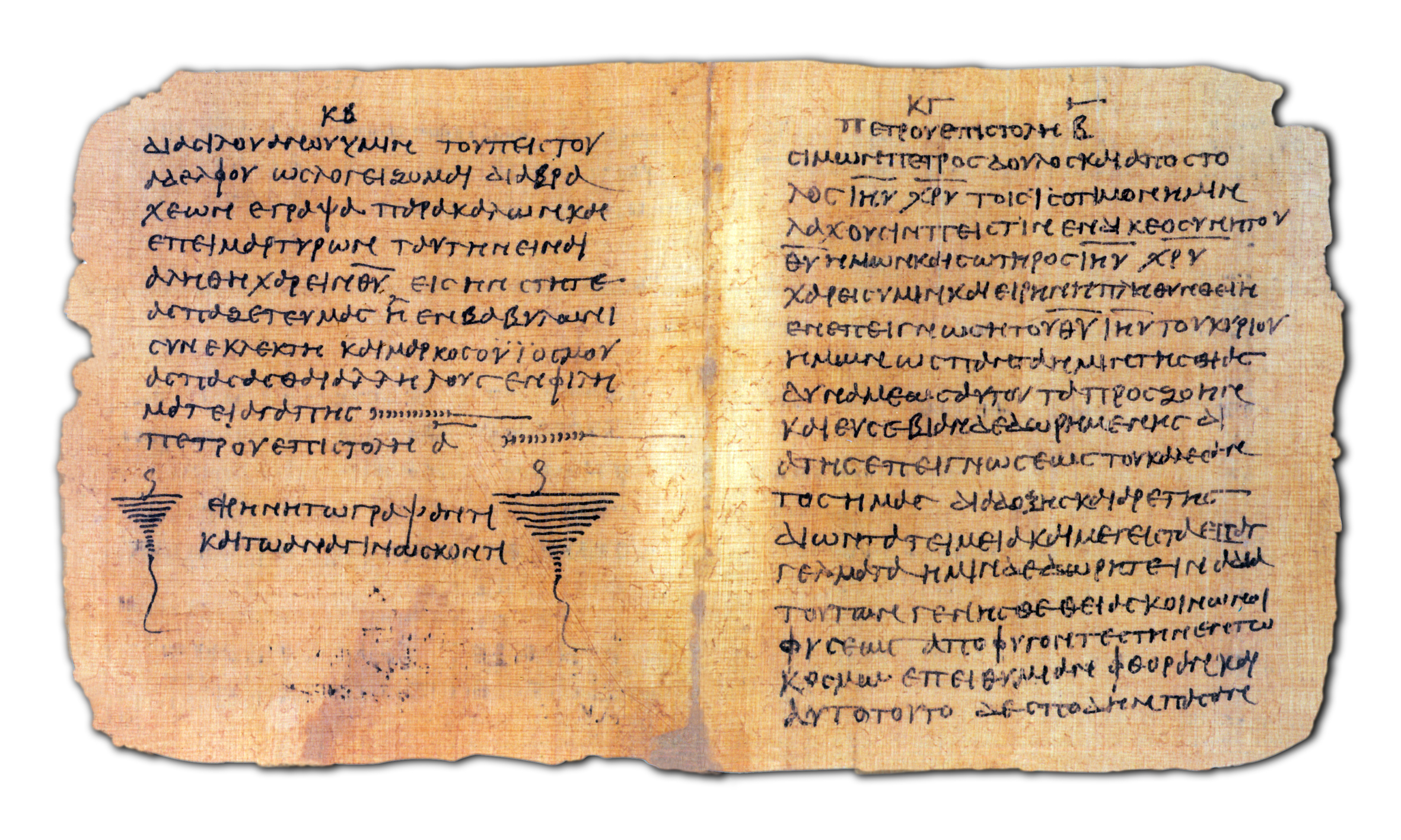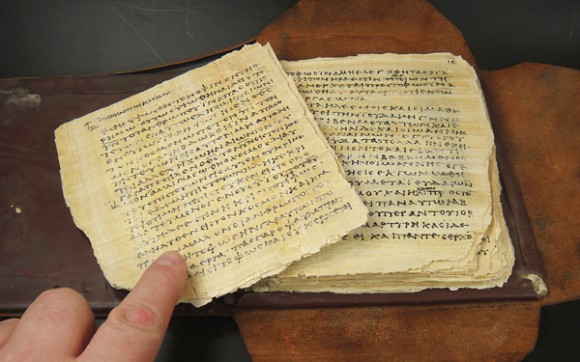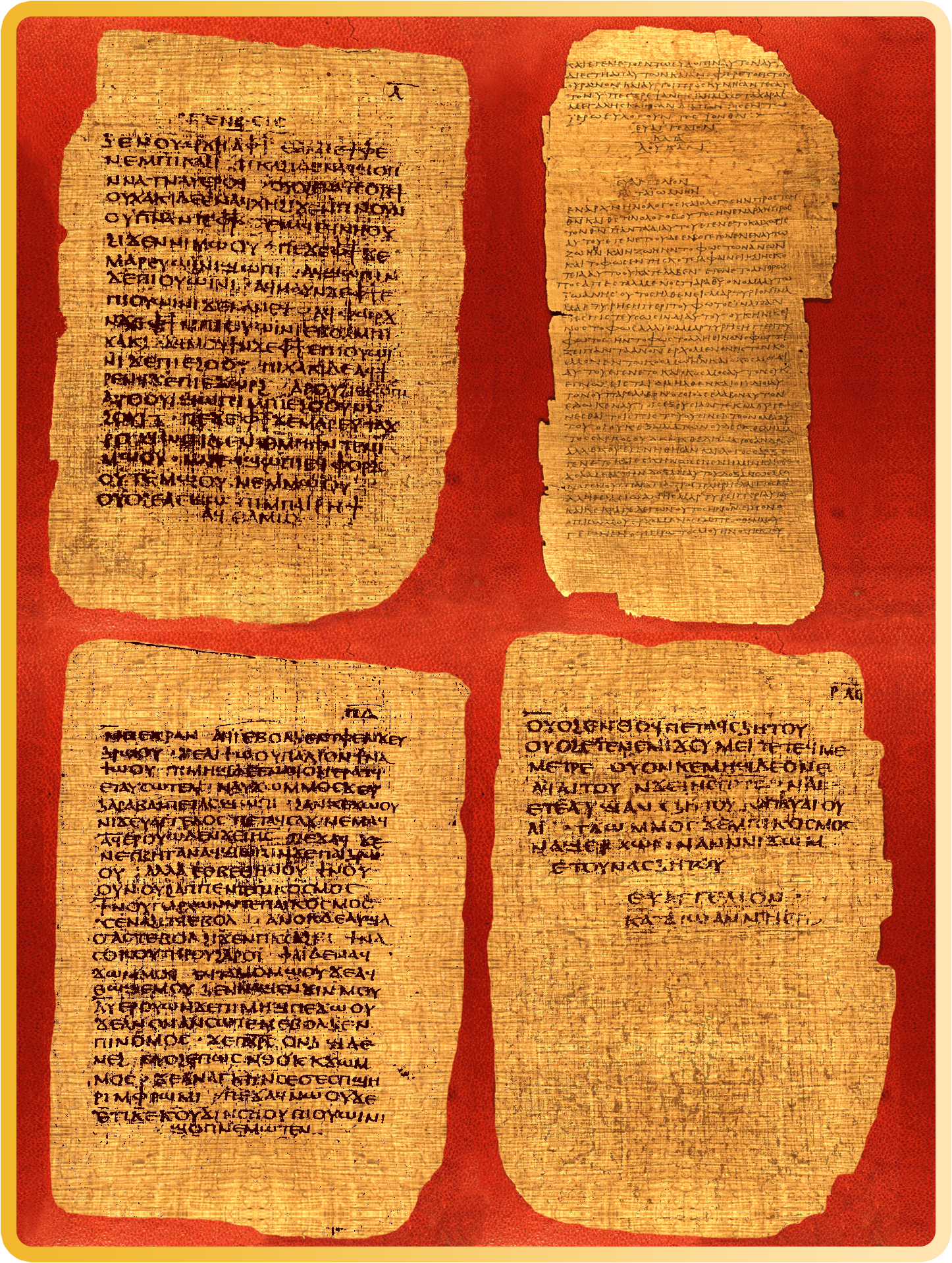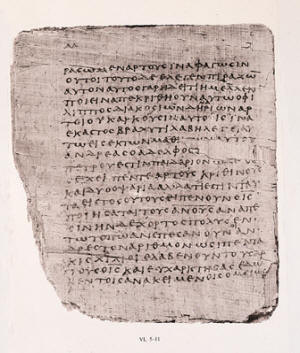Bodmer Papyri
The Bodmer Papyri are a group of 22 papyri that were discovered in 1952 in Egypt. They are named after their former acquirer Martin Bodmer. The papyri contain portions of the Old and New Testaments, early Christian literature, from Homer and Menander. The oldest among them, 66, is dated to about 200 AD. Most of the papyri are kept in the Bibliotheca Bodmeriana in Cologny ( Switzerland ) near Geneva. In 2007, the Vatican Library acquired two of the Papyri, 74 and 75 you are now preserved in the Vatican Library.
Overview
The Bodmer papyri were found in 1952 near Pabau Dishna in Egypt, the old headquarters of the pachomonischen monks. The discovery site is not far from Nag Hammadi. The manuscripts were put together in secret by the Cypriots Phokio Tano from Cairo and successively smuggled to Switzerland, where they were bought by Martin Bodmer. Beginning in 1954, the series Papyrus Bodmer was published with notes, introduction and French translation. Today, the Bodmer papyri are preserved in the Bibliotheca Bodmeriana in Cologny near Geneva. They are not Gnostic collection as the Nag Hammadi Library: The Bodmer Papyri contain both non-religious and Christian texts. Some of the 35 books are written in the Coptic language, others in Greek. Together with fragments of correspondence reaches the number of represented individual texts fifty. Most of the works are in the form of conduct, a few in the form of scrolls. Three are written on parchment.
Among the Bodmer Papyri to find the books V and VI of Homer's Iliad (1 ), three comedies of Menander and texts of the Gospels: 66 contains a text of the Gospel of John from the early 3rd century in the so-called Alexandrian text-type ( read or manuscript style). In addition to the papyrus fragment 52 of the John Rylands Library, this is the oldest witness to John. It lacks the passages of the water movement by a angel ( John 5:3 b-4 ) and the incident of Jesus and the woman taken in adultery (John 7.32 to 8.11 ). 72 is the oldest known copy of Judas letter and the 1st and 2nd Letter of Peter. 75 is the residue of a code, which contains most of Luke and John. A comparison of the two versions of John in the Bodmer Papyri with the Chester Beatty papyri dating from the 3rd century convinced Floyd V. Filson, "A comparison of these three that come together from Egypt, shows that there is no single text Gospels in Egypt 3. century was. "
The last of the Bodmer Papyri, 74, dated to the 6th or 7th century.
Acquisition by the Vatican
In October 2006, the intention of the Bodmer Foundation was published, two of the manuscripts to sell for several million dollars. This should be the library, which was opened in 2003, is financed. This led to the consternation of many scholars worldwide, who feared that the unity of the collection could be destroyed.
In March 2007 was then announced that the Vatican had acquired the papyri XIV- XV 75. It is believed to contain the oldest written fragments of the Gospel of Luke, the oldest Our Father and one of the oldest fragments of the Gospel of John.
The papyri had been sold for an undisclosed "significant " price to Frank Hanna III from Atlanta (Georgia, USA). In January 2007, Hanna showed the papyri the Pope. They are now preserved in the Vatican Library and made available for further study by scholars. In the future, excerpts may be made available to the general public.

